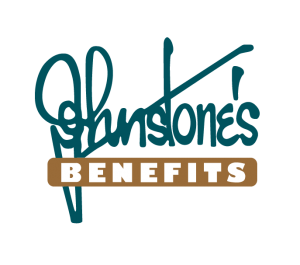The Journal
Solid Group Plans Made Simple
Reasonable and Customary
Important provision in group benefits plans
Many employers provide group benefit plans for their workforce to cover some health and dental expenses not covered by government programs. It’s an effective way of constructing tax-free compensation and has become an important tool for the attraction and retention of human resources.
All extended health and dental programs in group and individual benefit plans in Canada include a contractual provision that defines what the group and private insurance markets have determined, what defines ‘reasonable and customary (R&C)’ costs. R&C limits are set in consultation with health and dental services providers and provincial governments. These costs may differ by each province or territory, and even further geographically by virtue of cost-of-living costs, remote or highly populated and competitive markets. R&C limits help protect health and dental plans from fraudulent activity and excessive charges.
Extended Health
In extended health plans, R&C limits refer to the maximum amount eligible for reimbursement for a specific health service in the insured’s geographical area. Each insurer establishes their own R&C limits for extended health expenses using prior claims history, published recommended fees and competitive analysis.
R&C limits affect many extended health expenses, including prescription drugs, practitioner services (ie. chiropractors, physiotherapists, etc.), diabetes provisions (ie. test strips), hospital and ambulance services.
The cost of prescription medications is a high percentage of overall extended health claims, and consists of three components: the ingredient cost, the pharmacy markup and the dispensing fee. Ingredient cost markups are determined by individual pharmacies within legal maximums, and mark-up costs are also set by the pharmacy. To protect the EHC plan from high costs, the insurer verifies that prescription drug ingredient cost and the mark-up fall within the R&C limits established for the jurisdiction.
The R&C limits for dispensing fees are the maximum dispensing fee that the insurer will reimburse based on provincial or territorial guidelines issued, or through analysis of claims data. When expenses submitted to the insurer are higher than the R&C limit, the insurer will adjudicate and pay that product or service at the R&C limit.
Dispensing fees can vary widely from pharmacy to pharmacy, even within one community. Some provinces/territories require pharmacies to outline their dispensing fee on the prescription receipt and nearly all provide the dispensing fee amount to the insurer when submitting the claim.
Dental
Each provincial dental association publishes an annual dental fee guide, which act as a billing reference for dentists, who set the fees, as well as for insurance companies who assess dental claims. In determining price increases, factors such as cost of living, inflation, changes in technology and the frequency dentists perform certain procedures, as well as costs of operating dental practices within the province are taken into account.
Dental Fee Guide Increases 2022
Although, difficult to get clear updated information on actual dental benefit cost increases, the dental fee guide average fee increases in Canada this year provide proof of increasing costs affecting dental premiums and claims experience.
| Province/Territory | Avg Fee Increase* |
| Alberta | 3.9% |
| British Columbia | 7.35% |
| Manitoba | 5.79% |
| New Brunswick | 5.9% |
| Newfoundland and Labrador | 3% |
| Northwest Territories | Oral surgery – 5% Other – 3% |
| Nova Scotia | 7.05% |
| Nunavut | Oral surgery – 15% Other – 13% |
| Ontario | 4.75% |
| Prince Edward Island | 4.75% |
| Quebec | 5% |
| Saskatchewan | 5.99% |
| Yukon | Not available ** |
* reported January 1, 2022
** as of April 1, 2022
Dental costs increase due to factors including the cost of services, new technologies and treatments, new infection prevention and control standards (implemented in 2017), the growing utilization of dental services (people are taking better care of their oral health).
As well, fraud continues to be a substantial cost for dental plans. In 2019, CLHIA reported between 2% and 10% of all health dollars (including dental) are lost to fraud, impacted by increased online claim submissions, very common for dental services. While a proportion of these cases are purposely fraudulent acts, much of the loss is due to coding errors.
Health Spending Accounts (HSAs)
An alternative or supplement to extended health and dental plans are Health Spending Accounts (HSAs) – providing a defined contribution for EHC and/or dental services to employees to either put the onus of services with the patient, or to supplement other coverages. For more information, click here for our journal on HSAs.
